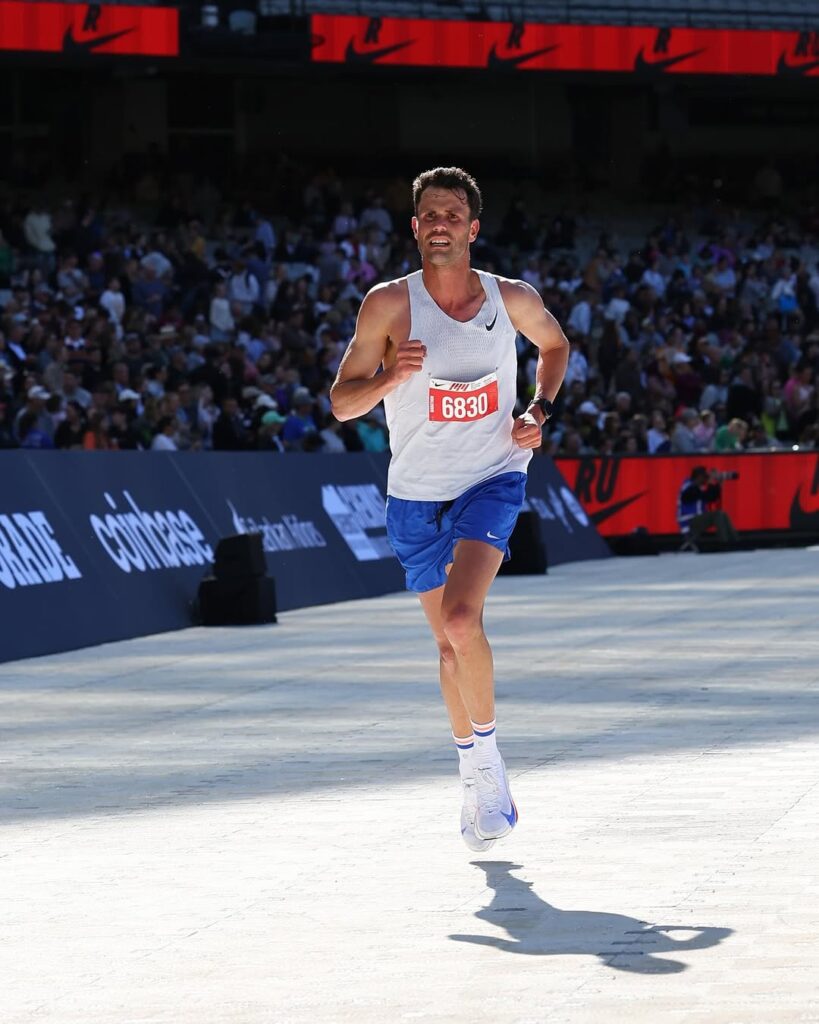IT’S CITY2SURF WEEK, and if you’re reading this just a few days out from race day – or god forbid, on the day itself – it probably means you’re not entirely confident the run will be a breeze.
The thing is, the City2Surf is not an easy run. If you simply must run 14 kilometres, there are easier places to do it, on routes with far more forgiving gradients. But of course, that would take the fun out of it. The City2Surf is one of the most popular and fun runs in the world, but still, the name ‘Heartbreak Hill’ doesn’t exactly inspire a great deal of confidence.
If Heartbreak Hill itself is the biggest cause of your trepidations, don’t worry, because like most things in running, it can be overcome. Lucky for you, we’ve enlisted the help of sports podiatrist and host of the Sports Medicine Project podcast, Blake Withers, to come up with six simple tips on how to get over Heartbreak Hill and conquer the City2Surf.
Practise hill sprints
Running on an incline isn’t just harder for the obvious reasons, it also puts more stress on specific muscles and tendons that aren’t targeted as heavily when running on flat ground. The City2Surf has an elevation gain of 221 metres, so to prepare, you need to condition your hamstrings and quads.
Withers recommends doing four to five sets of 15 to 20-second hill sprints at 70 to 80 per cent effort. He says that’s the “sweet spot to prepare your soft tissues and bones for the stress of running uphill.” Ideally, Withers advises doing this 1-2 times per week at the end of easy runs. Seeing as we’re already in race week, it might be too late to build your routine around hill sprints, but it won’t hurt to do a quick session or two before the big race.

Perfect your uphill form
Your running form will and should change when going over different elevation gains.
“When running uphill, focus on lifting the knee and flexing at the hip, moving with your arms,” Withers says. “This seemingly small adjustment helps you hit the ground sooner, maintain an upright, strong position. Most people can produce more power when they aren’t hunched over.”
Don’t let the downhill catch you off guard
Once you’ve finally reached the peak of Heartbreak Hill, your brain will tell you that it’ll all be easy from here on out. Your brain is wrong. Running downhill presents its own challenges, and you should adjust your form accordingly if you want to maximise efficiency.
“Lean back slightly to align your centre of mass with your base of support,” says Withers. “This enhances stability and comfort allowing you to cover the ground well.”
Do plyometrics
According to Withers, “Hopping at daily intervals can help newer runners.” This is because plyometric exercises improve muscular power, and the ability of your muscles to produce bursts of power in a short amount of time. As Withers says, “As simple as 5 minutes a day of double leg jumping, broken into 30-second sets can help.”
Adjust your cadence
When running up or downhill, you simply must adjust your steps per minute. On flat ground, long strides are the way to build momentum and fly, but on an incline quicker steps are more efficient. Downhill, a slightly longer stride is best.

Wear the right shoes
The benefits of having a good pair of running shoes are not to be underestimated. Especially on a high-elevation course like the City2Surf, a shoe that offers high levels of energy return can make a huge difference. Withers’ pick for the best City2Surf shoe is the adidas Boston 13, as it boasts Lightstrike Pro foam and Energy Rods, which work similarly to a carbon plate and provide high levels of responsiveness and speed.


















